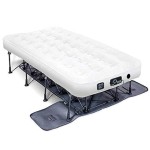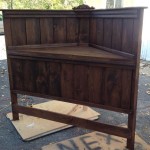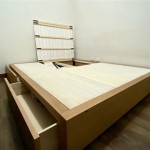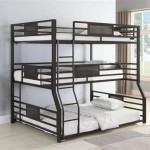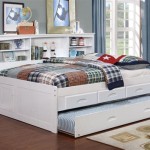Essential Aspects of King and Queen Size Bed Sizes
Selecting the right bed size is crucial for a comfortable and restful sleep. King and queen size beds are popular choices that offer ample space and support for couples. Understanding the key aspects of these sizes will help you make an informed decision.
Dimensions and Space Requirements
King size beds measure 76 inches (193 cm) wide and 80 inches (203 cm) long (76" x 80"). This size provides ample room for two people to spread out and sleep comfortably. However, it requires a large bedroom with a minimum space of 12 feet by 12 feet (3.7 meters by 3.7 meters) to ensure comfortable movement around the bed.
Queen size beds are slightly smaller, measuring 60 inches (152 cm) wide and 80 inches (203 cm) long (60" x 80"). They offer a wider sleeping space compared to a double bed and are suitable for couples or individuals who prefer extra space. A bedroom with a minimum space of 10 feet by 10 feet (3 meters by 3 meters) is recommended for a queen size bed.
Comfort and Support
King size beds provide exceptional comfort and support thanks to their ample width. They minimize tossing and turning during sleep, as each person has their own side and there is no risk of bumping into each other. This size is particularly beneficial for taller individuals or those who prefer to spread out while sleeping.
Queen size beds also offer good comfort and support, although they may feel slightly narrower for couples who are used to king size beds. They are a good choice for individuals or couples who prefer a more cozy sleep environment.
Bedding and Accessories
When purchasing a king or queen size bed, it's important to consider the bedding and accessories you may need. King size beds require king size sheets, blankets, and comforters, which can be more expensive than those for queen size beds. Additionally, larger bed frames, headboards, and footboards may be required for king size beds, which can add to the overall cost.
Queen size beds use queen size bedding and accessories, which are widely available and typically less expensive than king size items. This can make queen size beds a more budget-friendly option in the long run.
Other Considerations
Before purchasing a king or queen size bed, there are a few other factors to consider:
- Bedroom size: Ensure that your bedroom is large enough to accommodate the bed you choose, allowing for adequate space on all sides.
- Doorways and hallways: Verify that the bed can fit through doorways and hallways leading to the bedroom.
- Asymmetry in the room: If your bedroom is asymmetrical, a king or queen size bed can create a balanced and visually pleasing focal point.
- Mattress type: The type of mattress you select can affect the overall support and feel of the bed. Consider factors such as firmness, materials, and construction.
Conclusion
Choosing between a king and queen size bed ultimately depends on your individual preferences, sleeping habits, and bedroom space. King size beds offer maximum comfort and space, while queen size beds provide a good balance of comfort and affordability. By carefully considering the aspects outlined above, you can make an informed decision and find the perfect bed size to meet your needs and create a restful and enjoyable sleeping environment.

Hand Carved Solid Wood Queen King Bed Headboard Headboards Size Dimensions Frame Sizes

King Vs Queen Bed What S The Difference Amerisleep
.jpg?strip=all)
King Vs Queen Size Beds Differences Comparison And Benefits

Bed Dimensions A Guide To The Perfect In Solara Home

King Vs Queen Bed Detailed Mattress Comparison Turmerry

Mattress Size Guide

Mattress Sizes Chart And Bed Dimensions Guide Amerisleep

The Difference Between A Queen And King Bed Bedinabox

Mattress Sizes And Dimensions Guide Clarity

Homebliss The Hippest Community For Home Interiors And Design
Related Posts
